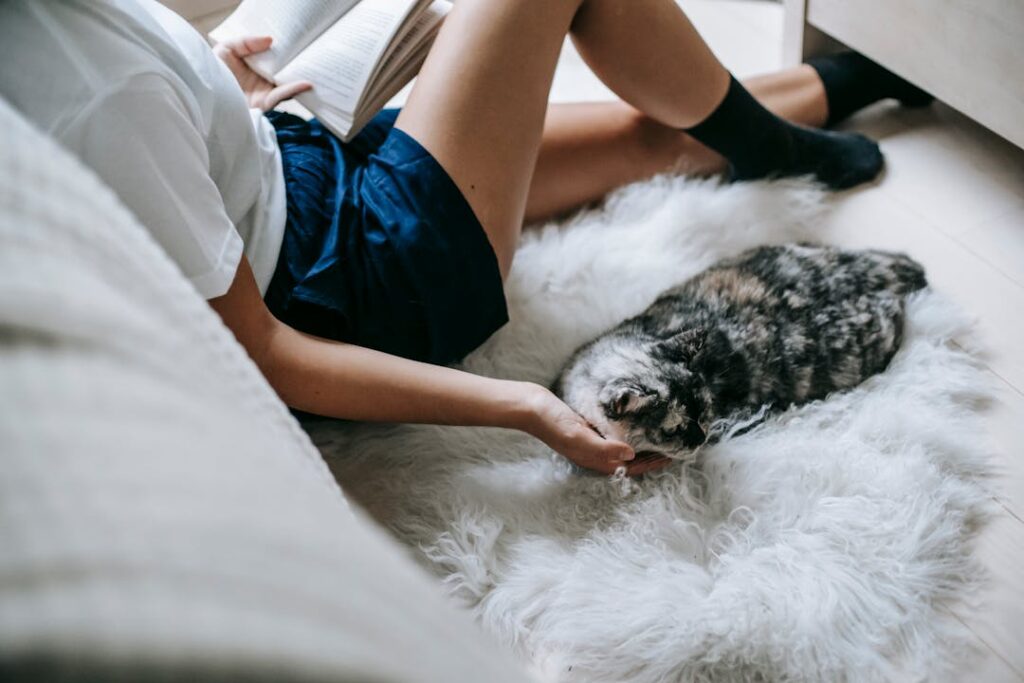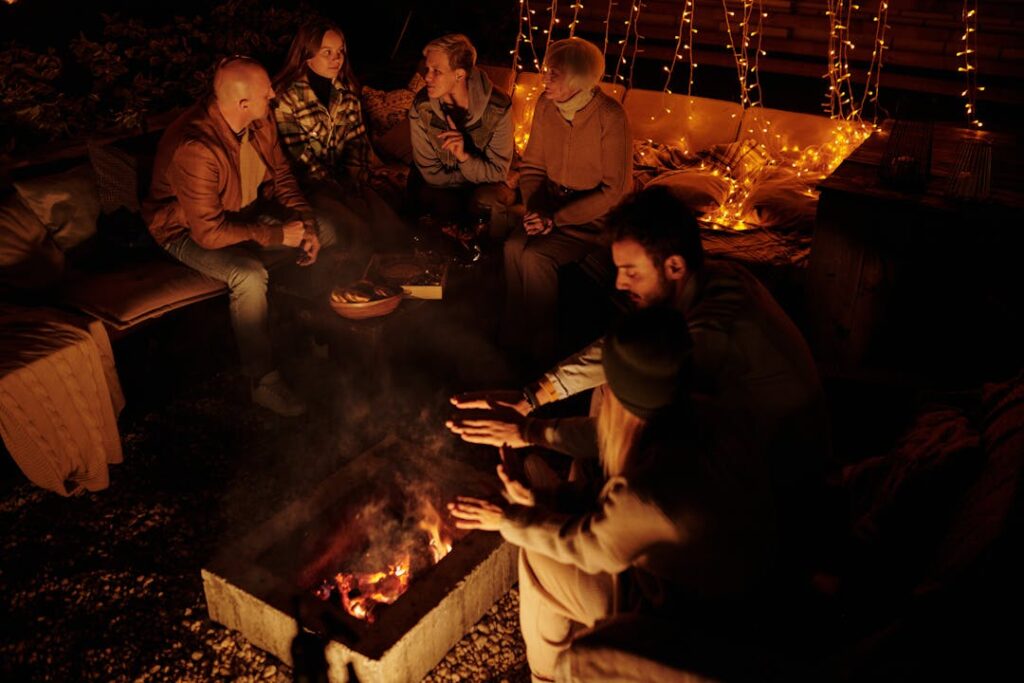When temperatures drop and winter sets in, it becomes a concern, and keeping warm and cozy takes a top priority.
To begin with, winter brings chilly days and frosty nights and no one wants to feel the chill seeping into their home. Do you? We hope not.
However, there are effective ways to combat the cold and keep your house warm throughout the cold season.
In this article, we will explore 9 proven strategies to ensure your home remains a haven of warmth during the coldest of days.
Subsequently, implementing these strategies can make your home more comfortable while saving on energy bills significantly.
So, don’t let the cold keep you shivering–read on for 9 effective ways to keep your house warm during the cold.
Importance of Keeping Your House Warm in Winter
Without a doubt what crosses your mind as winter approaches is:
Cold temperatures.
Icy winds.
Wet impassable roads.
And probably a myriad of other issues including your health concerns. (Getting a cold, breathing issues, pneumonia concerns e.t.c.)
These concerns can make indoor living uncomfortable if you haven’t heated your house adequately.
Therefore, maintaining a warm home in winter is crucial for both warmth and health reasons, especially for vulnerable individuals like children and older adults.
Now that, in brief, we have shown the importance of keeping your house warm, here are practical ways of doing it in cold weather.
1. Seal Windows and Doors: Preventing Heat Loss
Draught is a current of cold air that circulates in a room. If your room has cracks and openings, it keeps coming in exposing you to discomfort.
One of the primary reasons for heat loss in homes is through gaps around windows and doors.
Consequently, sealing these gaps and all air leaks in your home with weatherstripping or caulk can reduce heat loss and lower energy bills in the long run.
Another way to beat this is by utilizing window coverings to keep the cold out
It will effectively prevent heat from escaping through the windows.
2. Use Thick Curtains: Blocking Drafts and Cold Air
After sealing the escape routes, focus on your curtains next.
Thick curtains are a barrier against drafts and cold air coming through windows. They come in all forms and closing them at night and during cloudy days helps to keep the heat indoors.
While shopping for winter curtains, look out for those that have insulating properties.
3. Insulate Your Home: Maximizing Heat Retention
Besides having curtains with insulating properties, proper insulation in walls, floors, and attics prevents heat from escaping. It ensures that your heating system works efficiently and keeps your home warm and comfortable.
Here is a quick rundown of important places and items to insulate in your home. (This is for homeowners).
- Ceilings
- Walls
- Floors
- Ducts
- Attics
Insulating these places ensures the rooms are warm during winter and cool during summer. You keep the warm and cool air when needed without escaping, saving energy costs.
4. Install a Programmable Thermostat: Efficient Heating Control
Here’s how it works…
A programmable thermostat allows you to set different temperatures for various times of the day, optimizing heating when needed and saving energy when you’re away or asleep.
You choose to set when to put the heat on and at what temperature.
Correspondingly, use space heaters strategically instead, if the room or area you intend to heat is small.
Both methods will keep your house warm in winter.
The advantage of fan (space) heaters is that you don’t have to put the heating system of the whole house on when you don’t have to.
But you need to exercise caution when using a space heater. Don’t leave it too close to pets and children. Additionally, don’t sleep while it’s on. These will help avoid hazards in the house
5. Use Draft Stoppers: Keeping Cold Air Out
Placing draft stoppers at the bottom of doors prevents cold drafts from entering rooms, maintaining a consistent temperature throughout your home.
Strategically place them on door cracks and around window openings. Laid correctly, they are airtight and will help in your energy conservation efforts.
Not only do draft stoppers help you keep warm in winter, they can help block hot air from entering your house, thus keeping it cool. So, either way, you stand to gain when using draft stoppers.
6. Utilize Area Rugs: Adding Warmth to Floors

Just like heavy curtains help to keep a room warm, there is magic in using area rugs in your rooms.
They not only add aesthetic appeal but also provide insulation, especially on cold floors like tile or hardwood, keeping your feet warm and cozy.
Yes, there is no better feeling than sinking your feet in a thick carpet watching TV, and having coffee in your living room during winter.
Besides the living room, placing mats and rugs at the foot and side of your bed is cozy too.
Mmmh. What about your toilet seat and floor? Carpets can indeed turn any room into a comfortable place.
Explore the various places that turn cold in winter and see what a change a carpet and rug can bring.
7. Reverse Ceiling Fans: Circulating Warm Air
A ceiling’s design works anticlockwise.
Contrarily, you can work a modern ceiling fan clockwise with a simple click of a remote button.
Reversing the direction of ceiling fans in winter helps circulate warm air trapped near the ceiling, distributing it evenly throughout the room.
When this happens, you get more warmth and also save on your thermostat usage.
8. Maintain Your Heating System: Ensuring Optimal Performance
Regular maintenance of your heating system, including cleaning filters and checking for any issues, ensures that it operates efficiently, keeping your home warm without overworking.
Do a regular maintenance at least once a year.
While at it, you will also need to do a deep cleaning of your house, paying special attention to walls and floors, particularly hardwood. You don’t want your maintenance to leave other places of your premises dirty, do you?
9. Fireplaces and Sunlight as a Heat Source
When all is said and done, nothing beats the glow and warmth of a house, than the traditional fireplace. Whether you use logs or an electric fireplace, the ambience is one to die for. Get out and try either of them.

And as winter wanes, you are glad to welcome sunny days.
During sunny days, opening curtains or blinds allows sunlight to enter and naturally heat your home, reducing the need for artificial heating.
Maximizing this natural sunlight and trapping it in with draft stoppers will give you maximum efficiency.
Conclusion: Creating a Cozy and Warm Home
In conclusion, by implementing these nine best ways to keep your house warm in winter, you can create a cozy and inviting environment that promotes comfort and well-being for you and your family throughout the cold season.
From insulation and weatherstripping to clever heating hacks and innovative technology, you now have a range of options suitable for your budget and lifestyle
Do you have any other hacks to share? Let’s hear them in the comments. And if you need cleaning, engage us.
FAQs About Keeping Your House Warm in Winter
How often should I replace weatherstripping around windows and doors?
Check weatherstripping regularly, ideally at least once a year before the onset of winter. If you notice any signs of wear, such as cracks or gaps, it’s time to replace the weatherstripping to maintain its effectiveness in preventing heat loss.
Is it better to set a constant temperature or use a programmable thermostat?
Using a programmable thermostat is generally more efficient than maintaining a constant temperature throughout the day. You can program the thermostat to lower the temperature when you’re away or asleep and raise it when home, optimizing energy use without compromising comfort.
Can I use space heaters as a supplement to central heating?
You may use space heaters to supplement central heating in specific areas or rooms where you need additional warmth. However, use them safely and follow the manufacturer’s instructions to prevent fire hazards and ensure efficient heating.
What are some DIY methods to improve insulation in older homes?
DIY methods to improve insulation in older homes include adding insulation to attics, walls, and floors, sealing gaps and cracks with caulking or foam insulation, using thermal curtains or window films, and installing door sweeps and draft stoppers to prevent cold air infiltration.
Are there government programs or incentives for home energy efficiency upgrades?
Yes, there are various government programs and incentives aimed at promoting home energy efficiency upgrades. Check with your local government.
Leave a Reply